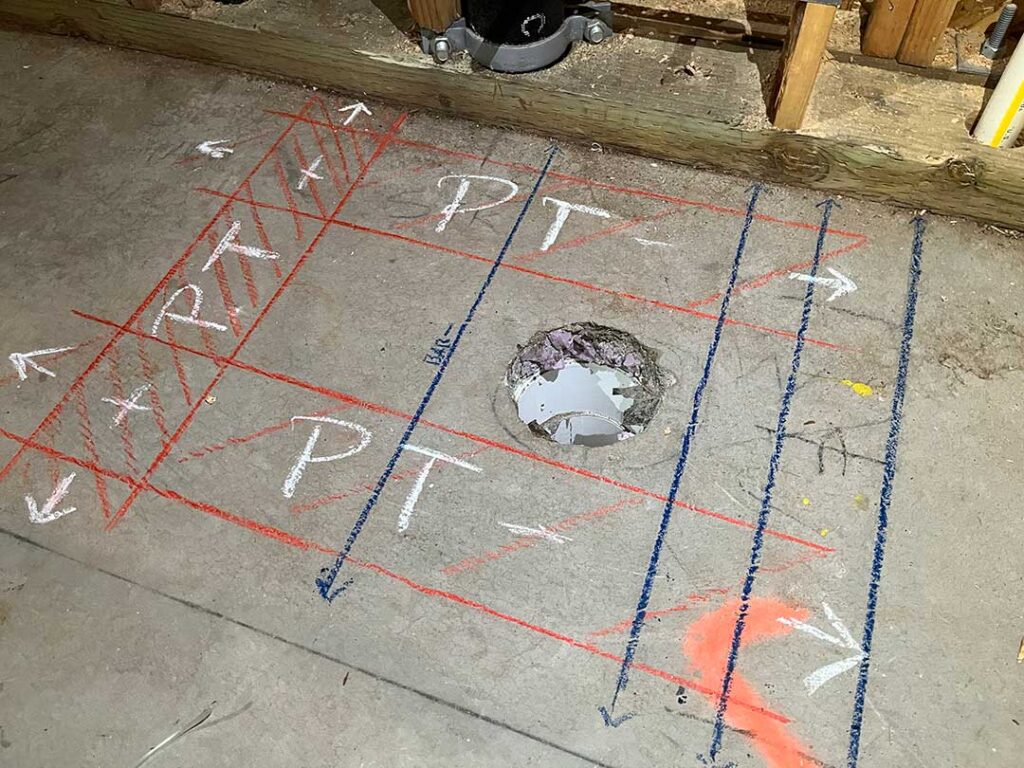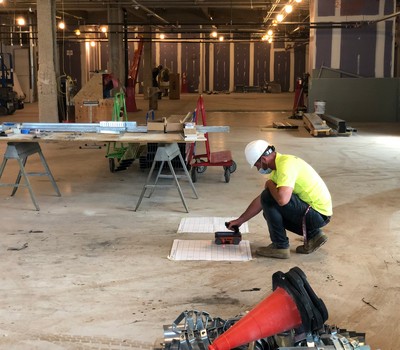Understanding RainierGPR Concrete Scanning: Important Advice
Understanding RainierGPR Concrete Scanning: Important Advice
Blog Article
Exploring the Depths: A Comprehensive Guide to Concrete Scanning and Its Diverse Applications
In the realm of building and construction and facilities advancement, the meticulous process of concrete scanning holds a critical function in making sure the architectural integrity and safety of projects. As technology continues to evolve, the applications of concrete scanning have actually broadened far beyond simple surface-level assessments. From identifying rebar and post-tension cables to mapping out channels and gaps hidden within concrete frameworks, the capacities of contemporary scanning techniques are both important and impressive. Nevertheless, the true deepness of concrete scanning's prospective reaches also better, branching right into unanticipated fields and stimulating cutting-edge remedies. The interconnected internet of possibilities that concrete scanning presents is not only interesting however likewise vital for the improvement of different industries.
Value of Concrete Scanning
Recognizing the value of concrete scanning is critical in ensuring the safety and stability of structures during building and construction and remodelling projects. Concrete scanning makes use of innovative modern technologies such as ground-penetrating radar (GPR) and electro-magnetic induction to discover ingrained things, spaces, or various other abnormalities within concrete frameworks - RainierGPR Concrete Scanning. By performing comprehensive scans before boring, cutting, or coring into concrete, construction teams can prevent unintended damage to essential architectural components like rebar, avenues, or post-tension cable televisions. This positive method not only stops expensive repair services and job delays yet additionally improves general construction security by alleviating the danger of structural failings or collapses due to endangered stability.
Additionally, concrete scanning plays a critical duty in making certain compliance with building ordinance and policies that mandate the defense of existing architectural components during building and construction activities. By properly mapping out the inner structure of concrete, scanning technologies make it possible for construction experts to make educated decisions that promote the structural security and resilience of buildings and framework tasks. In significance, the importance of concrete scanning exists in its capacity to protect both the structural stability and the personnel associated with building ventures.
Technologies Made Use Of in Concrete Scanning
Concrete scanning counts on innovative innovations such as ground-penetrating radar (GPR) and electromagnetic induction to precisely discover embedded objects and anomalies within concrete structures. Ground-penetrating radar runs by giving off high-frequency electro-magnetic waves right into the concrete. When these waves come across different materials or voids within the concrete, they recover to the surface, enabling the GPR system to develop a thorough subsurface photo. This modern technology is particularly efficient in situating rebar, post-tension wires, conduits, and other objects installed in concrete.
Electromagnetic induction, on the other hand, functions by producing electromagnetic fields around a concrete structure through a transmitter coil. When steel objects are present within the concrete, they interrupt these electromagnetic areas, causing eddy currents to move via the metal. By gauging the modifications in the electro-magnetic areas with a receiver coil, the system can determine the place of metal items in the concrete.
These advanced technologies play a crucial role in non-destructive testing, making certain the safety and honesty of concrete frameworks in different sectors.
Applications in Building Sector
Within the building market, concrete scanning technology discovers varied applications that improve project performance and safety. One essential application is the detection of rebar, post-tension cables, and other embedded items before learn the facts here now exploration or reducing right into concrete structures. By accurately drawing up these components, building groups can stay clear of expensive problems, ensure architectural honesty, and avoid prospective safety risks. Furthermore, concrete scanning is made use of for finding voids, such as air pockets or areas of degeneration within concrete, which can endanger the general toughness of a framework. By recognizing these gaps early, building and construction specialists can take required steps to address them and maintain the longevity of the building. Furthermore, concrete scanning plays a critical duty in quality assurance by validating the density of concrete covers over support, making certain conformity with layout specs and requirements. Generally, the applications of concrete scanning in the building and construction industry add substantially to enhancing task process, reducing risks, and supplying high-grade outcomes.

Safety And Security Advantages of Concrete Scanning
In the world of building and construction safety, the implementation of concrete scanning technology presents a paramount advantage in preemptively recognizing possible hazards and strengthening architectural honesty. By making use of advanced scanning methods such as ground-penetrating radar (GPR) and electro-magnetic induction, building and construction groups can precisely locate rebar, post-tension cables, channels, and other surprise items within concrete frameworks. This proactive approach considerably reduces the danger of unintended strikes throughout drilling, reducing, or coring tasks, consequently protecting against expensive damages, injuries, and job hold-ups.
Furthermore, concrete scanning improves worker safety by providing real-time info concerning the structural condition of concrete elements. This data allows building and construction experts to evaluate the honesty of existing structures, recognize degeneration or defects, and make educated decisions relating to repair work and upkeep procedures. By dealing with prospective safety worries promptly, concrete scanning contributes to producing a safe and secure workplace and minimizing the possibility of structural failings or accidents on construction websites. Ultimately, the security benefits of concrete scanning not only secure properties and lives however additionally promote sector criteria for top quality and dependability.
Future Patterns in Concrete Scanning
Arising developments in scanning innovation are positioned to revolutionize the field of concrete assessment and evaluation. By utilizing the power of AI, these systems can evaluate large amounts of data accumulated throughout scanning processes to give even more in-depth and exact understandings right into the condition of concrete structures.
An additional significant trend is the development of even more user-friendly and portable scanning gadgets. Miniaturization of scanning tools enables much easier access to restricted areas and remote places, making assessments more reliable and comprehensive. Furthermore, innovations in cordless interaction modern technologies enable real-time information transfer and evaluation, assisting in quicker decision-making procedures.
Additionally, there is an expanding focus on sustainability in concrete scanning technologies - RainierGPR Concrete important source Scanning. Manufacturers are progressively integrating environmentally friendly materials and energy-efficient features right into their gadgets to minimize environmental impact. These future trends are readied to enhance the performance, precision, and sustainability of concrete scanning methods, forming the industry's future landscape
Verdict
In verdict, concrete scanning plays a vital duty in the construction industry by making certain the safety and performance a fantastic read of different jobs. As technology developments, the future of concrete scanning holds promising developments for improving building and construction processes.

Report this page